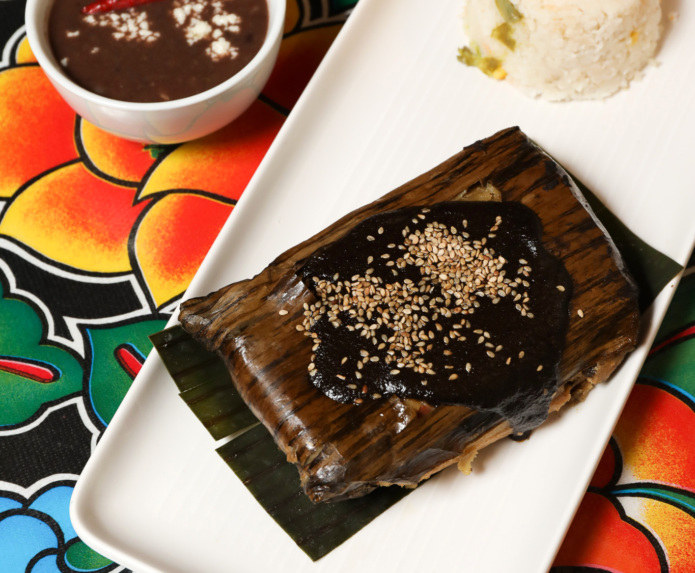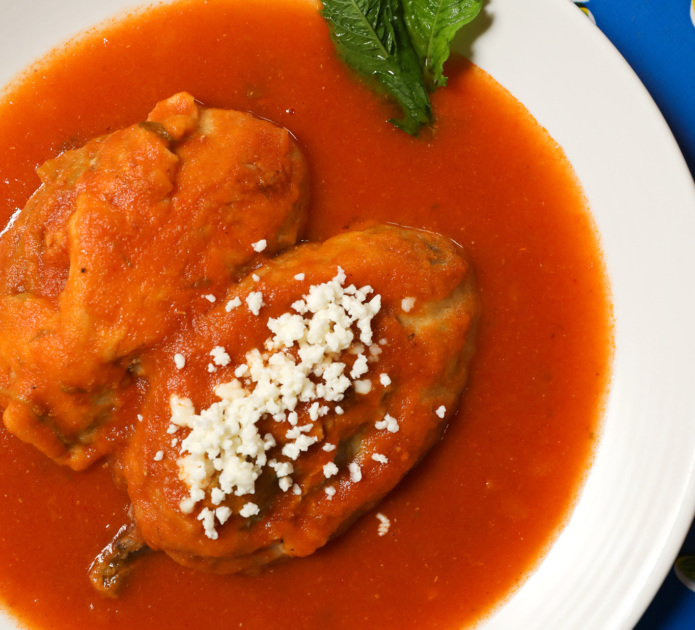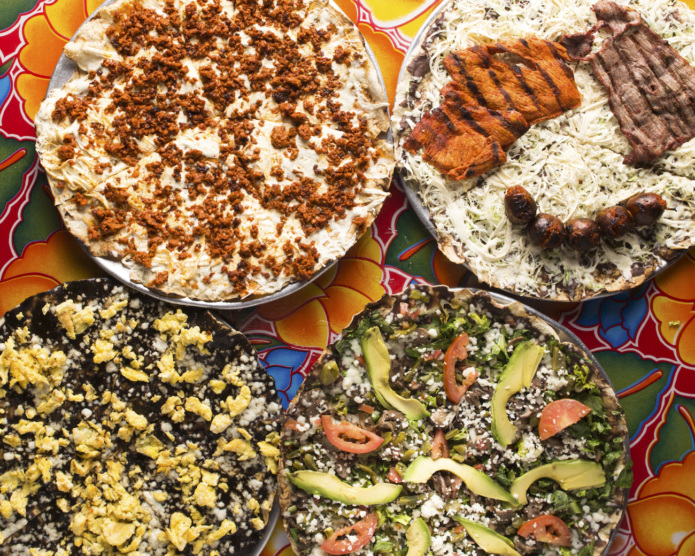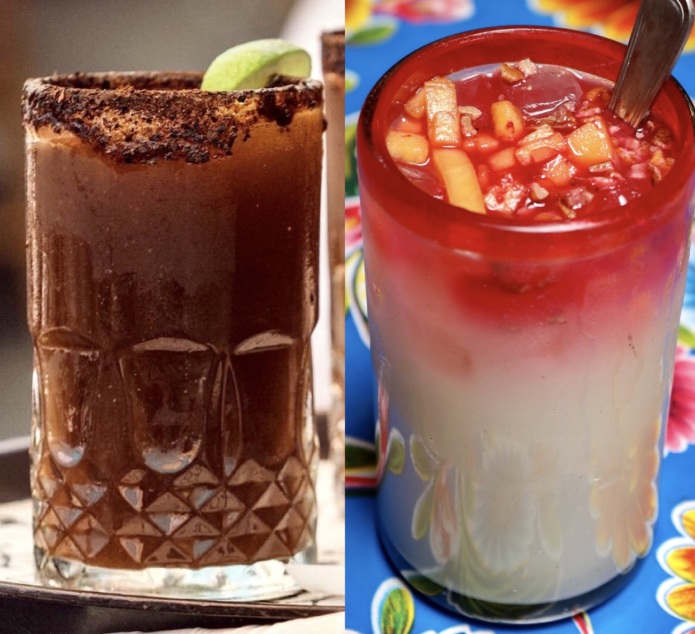
The Oaxacan Traditions of Guelaguetza, As Seen Through Five Dishes
Guelaguetza, one of L.A.’s most iconic restaurants, has been a haven for the city’s vast Oaxacan population who miss dishes of their homeland. Opened by Fernando Lopez and Maria Monterrubio in the heart of Koreatown in 1994, it has garnered praise from around the country and world for its rich, soulful moles, tangy micheladas, excellent agave spirit selection, and familial vibe.
And it’s not just for expats needing a fix. The restaurant has been instrumental in popularizing Oaxacan cuisine not only in Los Angeles, but throughout America. It’s often seen as a frontier for gourmands looking to sample one of many regional Mexican dishes — many got their first taste of mole negro, tlayudas, or chapulines here. That might have helped propel it to some of its accolades, including a 2015 inclusion in the James Beard Foundation roster of American Classics, and the Los Angeles Times Gold Award in 2021.
Like so many others, the restaurant had to rely on ingenuity to survive the pandemic. One of the biggest changes was doing more takeout than ever, but also adding an outdoor setup: a colorful corridor patio filled with picnic tables, sunshine-shading umbrellas, and, as always, lots of mole and mezcal.
Their hope is to keep it forever, but at least it will stay for awhile; and the bar returns in early July. Now run by three of Lopez’s children — Bricia, Fernando, and Paulina — the family also expanded the empire, with a cookbook, Oaxaca: Home Cooking From The Heart of Mexico, released last year; and jarred mole and bottled michelada mix that can be shipped anywhere.
In other words, Guelaguetza isn’t just a relic of Oaxacan culture in L.A., it’s a snapshot of the Lopez family’s favorite homeland memories, and an important thread woven into the fabric of Southern California’s culinary traditions. We talked to Bricia Lopez about the five iconic dishes that tell the restaurant’s, and family’s, story.

Tamal Oaxaqueño
“This is one of my favorite dishes, and one of my favorite ways of eating mole. It’s a black mole tamal with shredded chicken inside, all wrapped in a banana leaf. Because it’s not the traditional corn husk, it breaks that preconception of what a tamal should look like. Although it’s our number one seller, I hardly ever eat a whole plate of chicken with mole. And out of all of our moles, the mole negro is my favorite. It’s a recipe from my mom’s side, and just reminds me of celebrations, the way I’d eat it as a kid. It was such a sacred dish, something you only ate when someone was getting married or [at] a baptism. A tamal like this is what people would make after the parties with the leftovers. I love having it that way. It really represents everything that is Guelaguetza.”

Chile Relleno
“I always recommend this dish to people. Again, it kind of breaks the stereotype of what the chile relleno is in people’s minds. Some might think it’s soaked with grease, and it’s big and filled with oozing cheese. It’s completely the opposite for us. Obviously, it’s still a chile battered in egg and flour. The chile de agua we use is imported from Oaxaca because it’s only grown there. We bring it from there, roast and peel it, and stuff it with a wonderful chicken picadillo — a recipe that’s been in the family forever. We also have a cheese-filled one, which has a little bit of epazote inside, that has great flavor.”

Tlayuda
“When I think of Oaxaca and Guelaguetza, I think of the ‘Mexican pizza’. Why I love ours so much is we bring the tortilla from Oaxaca, we cover it with asiento, which is pork paste, then layer it with this beautiful bean sauce that we make. And we use avocado leaves and chile de arbol, cheese, cabbage. And then you choose whichever meat you want — we do all our meats here from scratch. We have a butcher that breaks down all of our meats. And then we put it over an open fire wood grill with mesquite. So it really has that smoky flavor that I love.”

Taco de Barbacoa
“This dish reminds me of Sunday in Tlacolula, which is a huge market in Oaxaca. Sundays are for eating barbacoa. You go to your mercado — in my case, Tlacolula — and you sit there and have these large handmade corn tortillas, about 14 inches in diameter. You add the goat barbacoa meat, wrap it, cut it in half, and then you have a broth next to it for dipping. Then you add a little bit of lime, salt, cilantro, chopped jalapeños, and onions on top. It’s almost like a Oaxacan French dip. That, with a michelada, is the ultimate weekend morning dish. Especially when you’re hungover! I love it.”

Pink Horchata and Michelada
“We were the first restaurant in Los Angeles to reinvent what horchata could be. Before pink horchata was cool, we did this here, and people love it. We don’t designate it as vegan on the menu, but it is, because it’s made with rice water. Then we add cantaloupe, walnuts, and prickly pear syrup on top. It’s this beautiful goodness and that will forever be our top seller.
“The other thing that people come here for is the michelada, to feel refreshed. For people in L.A., even now, you’re basically getting Bloody Mary mix and beer, and it’s a poor representation of what a michelada could be. But ours is different because there are a lot of different sauces involved. Plus it’s brown and doesn’t have a strong tomato flavor, but it is more acidic. We’ve had this recipe forever, and now we bottle it to sell in stores and retail. It’s just iconic.”
Esther Tseng is a food, drinks and culture writer. She has contributed to The Los Angeles Times, Eater, Food & Wine, Civil Eats and more. Follow her on Twitter and Instagram. Follow Resy, too.















